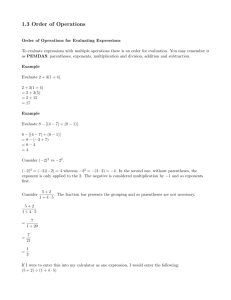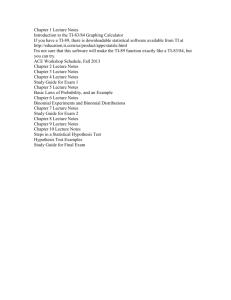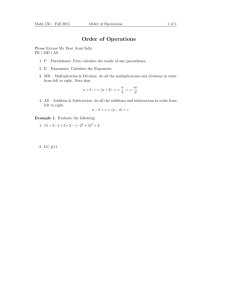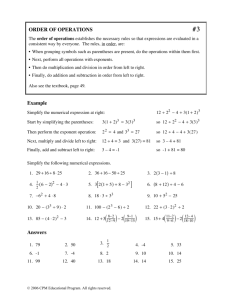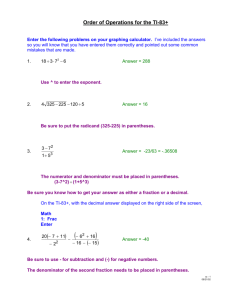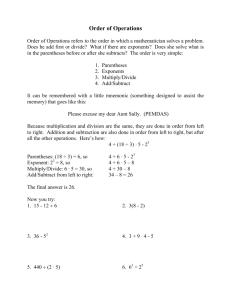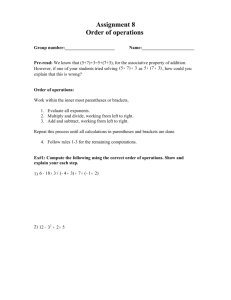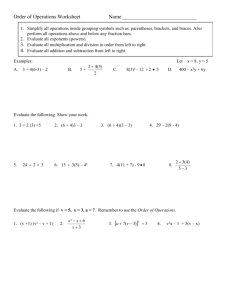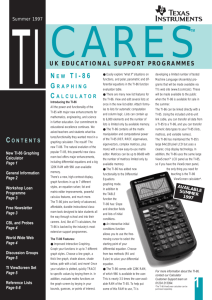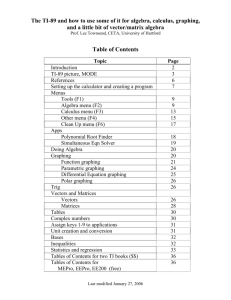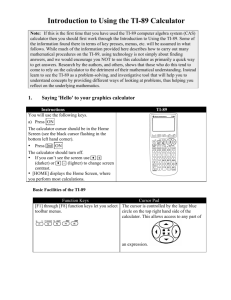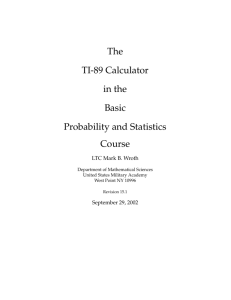Entering Expressions Correctly
advertisement
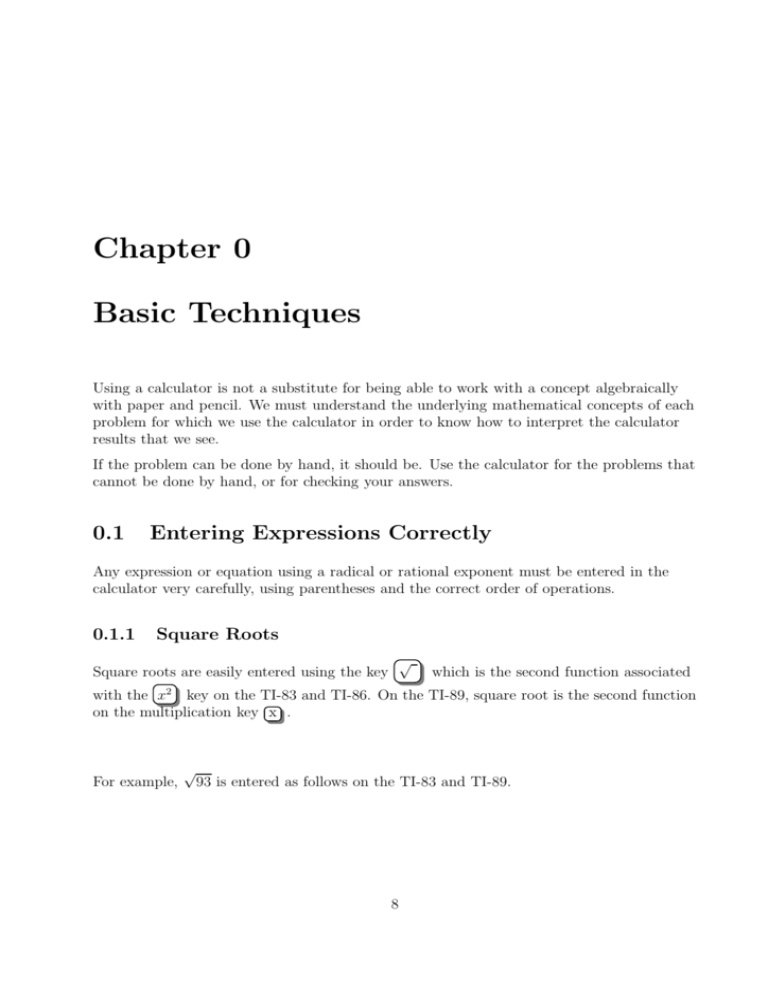
Chapter 0 Basic Techniques Using a calculator is not a substitute for being able to work with a concept algebraically with paper and pencil. We must understand the underlying mathematical concepts of each problem for which we use the calculator in order to know how to interpret the calculator results that we see. If the problem can be done by hand, it should be. Use the calculator for the problems that cannot be done by hand, or for checking your answers. 0.1 Entering Expressions Correctly Any expression or equation using a radical or rational exponent must be entered in the calculator very carefully, using parentheses and the correct order of operations. 0.1.1 Square Roots Square roots are easily entered using the key √ which is the second function associated with the x2 key on the TI-83 and TI-86. On the TI-89, square root is the second function on the multiplication key x . For example, √ 93 is entered as follows on the TI-83 and TI-89. 8 Press 2nd and √ (left picture). Type 93 and the closing ) (right picture). Finally, press Enter to get the answer. The pictures below show the TI-83 window on the left, the TI-89 window in the middle, and the TI-86 window on the right. Notice the parentheses are necessary when entering the number on the TI-89, but they are removed when that value is displayed. We must be very careful with parentheses. The TI-83 and TI-89 automatically include the beginning “(” with the square root symbol, but the TI-86 does not. Notice what happens if we are taking the square of more than one number on the TI-86. √ √ Find 9 + 16. With parentheses, we have 25 = 5 (left picture). Without parentheses, we √ 9 + 16 = 3 + 16 = 19 (right picture). 0.1.2 Other Roots and Rational Exponents Cube roots, fourth roots, etc. and all rational exponents are entered using fractional exponents. For example, desired expression √ 3 64 √ 4 64 32 8 Copyright 16 81 34 2007 Barbara Kenny keystrokes result displayed 64 ∧ (1/3) 4 64 ∧ (1/4) 2.828427 8 ∧ (2/3) 4 (16/81) ∧ (3/4) Page 9 (Section 0.1.2) 8 or .296296 27 0.1.3 How to Enter Expressions We must include parentheses appropriately when entering expressions. Several examples are shown here. Notice the parentheses around the radicand of the radical, also around fractional exponents, numerators and denominators of fractions, and bases of exponential expressions. handwritten √ 3 calculator keystrokes x2 + 1 − 5 (x ∧ 2 + 1) ∧ (1/3) − 5 x+1 x2 − 3 2 (x + 1)/(x ∧ 2 − 3) 2 5x 3 − 3x 5 + 6 5x ∧ (2/3) − 3x ∧ (2/5) + 6 5x2 3x2 − +6 3 5 5x ∧ 2/3 − 3x ∧ 2/5 + 6 2 (5x) 3 + 4x−2 (5x) ∧ (2/3) + 4x ∧ (−2) r 3x + 1 x−1 √ 3x + 1 x−1 √ √ x−1 x+3 (3x + 1)/(x − 1) (x − 1)/(x + 3) x− 1 x+3 x − 1/(x + 3) x− 1 +3 x x − 1/x + 3 x−1 +3 x 3x + Copyright ((3x + 1)/(x − 1)) (x − 1)/x + 3 2 5 2007 Barbara Kenny 3x + 2/5 Page 10 (Section 0.1.3)
